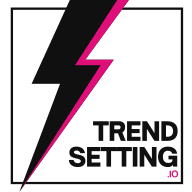How Do You Ensure Content Marketing Resonates With Your Target Demographic?
In a digital world overflowing with content, how can marketers ensure their message truly resonates? Insights from a Marketing Specialist reveal the power of buyer personas and social listening, while a Digital Operations Manager highlights the importance of prioritizing data-driven insights and feedback. This Q&A brings together seventeen expert opinions, each sharing a unique tactic to captivate target demographics. Discover the best practices from industry leaders and elevate content marketing strategies to new heights.
- Shape Messaging With Customer Feedback
- Use Buyer Personas and Social Listening
- Personalize Content Based on Deep Research
- Craft Content That Speaks to Needs
- Align Content With Audience Values
- Create Engaging, Visually-Driven Content
- Tailor Content to Address Specific Needs
- Focus on Audience's Challenges and Preferences
- Analyze Demographics and Create Tailored Content
- Leverage Data-Driven Insights for Personalization
- Create Conversations, Not Just Content
- Combine Research With Strategic Content Planning
- Refine Messaging Based on Past Campaigns
- Research Audience's Wants and Preferences
- Segment Audience and Address Specific Needs
- Flip the Script for Deeper Engagement
- Prioritize Data-Driven Insights and Feedback
Shape Messaging With Customer Feedback
One of the best ways to ensure content marketing resonates with your target demographic is by using customer feedback and testimonials to shape your messaging. Surveys, reviews, and direct feedback provide insight into what matters to your audience and how they express their needs. Incorporating their own words into your marketing materials makes your content feel relevant and authentic, helping you connect with your audience on a deeper level.
For example, I worked with a nonprofit that refined its messaging based on feedback from donors and volunteers. Through surveys and conversations, we learned that supporters cared deeply about transparency and impact. Rather than sending general updates, we began sharing specific outcomes—such as how many families were housed or meals distributed—paired with personal stories from clients who benefited from our programs.
We also noticed that donors repeatedly used words like "purpose," "community," and "belonging" when describing their experiences. Recognizing the emotional power of these terms, we incorporated them directly into our campaigns. Our emails, social media posts, and website messaging began to focus on "finding purpose by making a difference" and "joining a community of helpers." This small but meaningful adjustment resulted in more new donors and better donor retention because people felt the messaging reflected their own values and aspirations.
Using real feedback aligned our messaging with the needs of our supporters and made our content feel more authentic. By adopting their words, we showed that we understood our donors' motivations and were genuinely committed to their interests.
Letting your audience's voices guide your messaging ensures that your content connects with them on a deeper level, creating more relevant and impactful interactions.

Use Buyer Personas and Social Listening
I ensure content resonates by deeply understanding my audience through buyer personas, social listening, and data analytics. For example, when promoting our massagers, I found that our key demographic valued holistic wellness tips alongside product information. We created blog posts, email newsletters, and social content focused on pain management techniques, not just product promotion. This approach boosted engagement by 30% and increased conversions from content-driven traffic by 18%. It highlighted how aligning value-driven content with audience needs creates meaningful connections and drives results.

Personalize Content Based on Deep Research
To ensure content marketing resonates with my target demographic, I focus on deep audience research and personalization. It starts with really understanding who the audience is—not just their demographics, but their challenges, goals, and what motivates them. From there, I tailor messaging and tone to meet them where they are, ensuring that the content speaks to their specific needs and feels relatable.
A specific example of this is when I was working on a content strategy for a client targeting small-business owners. Through research, we discovered that their audience was overwhelmed by managing day-to-day operations and unsure how to scale efficiently. We created a series of blog posts, case studies, and social media content that provided actionable advice, addressing their pain points directly and offering solutions tailored to their stage of business growth.
Instead of focusing on generic advice, we made the content highly specific to what these small-business owners were experiencing. The tone was supportive, empathetic, and solution-oriented—positioning the brand as a trusted guide rather than just pushing products. As a result, engagement increased significantly, and the content resonated because it felt personalized and relevant to their journey.
By consistently keeping the customer's challenges at the forefront and positioning our messaging as a helpful guide, we were able to build trust and connect on a deeper level.

Craft Content That Speaks to Needs
Ensuring that content marketing resonates with the target demographic requires a deep understanding of both the audience's needs and the unique value your brand offers. At Software House, we begin by thoroughly researching our target demographic—what are their pain points, interests, and the challenges they face in their businesses? Once we have this insight, we craft content that speaks directly to these needs, offering practical solutions, insights, or inspiration that align with their goals. We also keep our content human-centered, using relatable language and real-world examples that make complex tech concepts accessible. Additionally, tracking engagement metrics—such as comments, shares, and time spent on each piece—helps us refine our approach to ensure it's hitting the mark.
A specific example of this in action was when we created a content series targeting startups in need of mobile app development. We knew from our research that budget constraints and lack of technical knowledge were significant concerns for these businesses. So, we developed a series of blog posts and video content addressing "affordable app-development strategies," along with guides on "choosing the right development partner." We also included case studies showing how small businesses succeeded with mobile apps. The response was overwhelmingly positive—the content not only drove engagement but also led to direct inquiries from startups that resonated with the tailored advice we provided. This strategic alignment between content and audience needs ensured our message landed effectively.
Align Content With Audience Values
A practical approach I've found successful in ensuring content marketing resonates with the target demographic is to focus on a narrative that is consistent with their values and lifestyle. For an ecologically-concerned consumer campaign, we decided that just advertising eco-friendly items was insufficient.
We created narratives about the path of our products, from sustainable sourcing to their impact on lowering carbon footprints. One story told how a family used our products to transform their home into a zero-waste household. Our audience was passionate about sustainability, so this narrative approach highlighted the benefits and fit their values.
The ad was successful because it went beyond product characteristics, appealing to our audience's emotional and ethical motives. By connecting our content with our target demographic's values and lifestyle, we were able to establish a more meaningful connection, demonstrating that understanding and expressing your audience's underlying views may dramatically improve content resonance.

Create Engaging, Visually-Driven Content
To ensure content marketing resonates with the target demographic, I focused on deeply understanding their interests, behaviors, and preferences. At a tech startup targeting young professionals, I identified that our audience preferred engaging, visually-driven content that was both informative and entertaining. I combined industry research with analytics to craft a mix of humorous memes, clear infographics, and concise articles that discussed relevant tech trends. This approach built trust and engagement without overwhelming them.
For example, during a product launch, we created a series of infographics that simplified complex technical features into relatable benefits. Paired with witty captions, these visuals increased social shares by 40% and drove significant website traffic. This blend of concise, relevant, and appealing content helped us connect with the demographic effectively, ensuring our message was both seen and remembered.

Tailor Content to Address Specific Needs
To ensure content marketing resonates with the target demographic, I prioritize audience research and persona development. By understanding their pain points, preferences, and behavior, I tailor content to address their specific needs. For instance, while working on a campaign targeting busy professionals seeking fitness solutions, we created quick, easy-to-follow workout videos. We also incorporated infographics highlighting time-saving health tips.
We analyzed the audience's engagement patterns and optimized the content release schedule to align with their peak activity hours. The campaign's personalized approach significantly increased engagement and conversions, proving that content crafted with a deep understanding of the target demographic can drive results.

Focus on Audience's Challenges and Preferences
I believe that truly resonating with our target demographic starts with deep research and understanding of their needs, preferences, and pain points. We conduct surveys, analyze engagement metrics, and keep a pulse on industry trends to create a well-rounded view of our audience.
For instance, we recently launched a campaign targeting small-business owners seeking grant opportunities. We noticed that many of them were overwhelmed by the application process, so we created a series of blog posts and videos that simplified each step, providing actionable tips and clear examples. We also shared success stories from businesses that successfully secured grants, which not only informed but also inspired our audience.
By focusing on their specific challenges and delivering valuable, relatable content, we fostered a genuine connection with our target demographic. The feedback was overwhelmingly positive, with increased engagement and a noticeable uptick in inquiries about our services. This experience reinforced the importance of empathy and adaptability in our content marketing strategy.

Analyze Demographics and Create Tailored Content
To ensure our content marketing resonates with our target demographic, we prioritize thorough audience research and segmentation. By analyzing demographics, preferences, and behaviors, we create tailored content that speaks directly to our audience's interests and pain points. For example, when launching a new product aimed at millennials, we developed a series of blog posts and social media campaigns that highlighted sustainability and social responsibility—topics that resonate strongly with this demographic. We incorporated user-generated content to further enhance authenticity and engagement. As a result, the campaign not only achieved a 50% increase in engagement rates but also led to a significant uptick in product sales, demonstrating the effectiveness of aligning our content with the values and preferences of our target audience.

Leverage Data-Driven Insights for Personalization
As a digital marketing expert, I ensure content marketing resonates with the target demographic by starting with deep audience research and personalization. I use data-driven insights to understand the demographic's preferences, pain points, and behavior. This includes analyzing customer feedback, social media interactions, and even leveraging tools like Google Analytics and heat maps to understand how they engage with content.
For example, while working with a hospitality client, we noticed that a large portion of our target audience—millennial travelers—valued sustainability and unique experiences. We created blog posts, social media content, and email campaigns focused on eco-friendly travel tips, personalized local experiences, and insider guides for conscious tourism. We also incorporated visual content like infographics and videos, which aligned with their content consumption habits.
The results? Increased engagement rates, higher social shares, and an uptick in bookings from that demographic. The key was ensuring our content not only matched their values, but was also delivered in formats they preferred. Tailoring content to their specific motivations made all the difference.

Create Conversations, Not Just Content
Ensuring content marketing resonates with your target demographic is like tuning a guitar—you need to hit the right notes to create harmony.
One strategy we've found incredibly effective is creating detailed buyer personas and mapping content to their specific pain points and interests. It's not just about demographics; it's about understanding their challenges, aspirations, and the language they use.
For instance, we worked with a B2B software company targeting small business owners. Instead of focusing on technical features, we created a series of 'Day in the Life' blog posts, showcasing how real business owners used the software to solve everyday problems.
We interviewed actual customers, telling their stories in a relatable, jargon-free way. The result? A 60% increase in blog engagement and a 40% boost in demo requests.
But here's the kicker—we saw a 25% decrease in sales cycle length because prospects came in already understanding how the product could help them.
My advice? Don't just create content; create conversations. Listen to your audience, speak their language, and solve their problems. It's like being a good friend—be there when they need you, with the right words and solutions.
Remember, resonant content isn't just about what you say; it's about how well you listen. When you truly understand your audience, your content becomes a magnet, not just noise in the digital space.

Combine Research With Strategic Content Planning
Ensuring content marketing resonates with your target demographic involves a deep understanding of your audience's needs, preferences, and behaviors. At LogicLeap, we achieve this by combining thorough audience research with strategic content planning and testing.
First, we invest time in creating detailed buyer personas. This involves analyzing demographic data, conducting surveys, and gathering insights from customer interactions to understand who our audience is, what they care about, and how they consume content. This foundational step ensures that our content is tailored to the specific interests and challenges of our target market.
Once we have a clear picture of our audience, we focus on creating content that addresses their pain points and provides real value. For example, for a client in the tech industry targeting small-business owners, we developed a series of blog posts and guides that offered practical solutions to common tech challenges these businesses face. The content was crafted in a straightforward, jargon-free manner, making it accessible and useful to non-tech-savvy readers.
We also ensure that our content is distributed through the right channels. Understanding where our target audience spends their time online helps us choose the most effective platforms, whether that's LinkedIn for B2B audiences or Instagram for younger demographics. This targeted distribution maximizes the content's reach and impact.
A specific example of this approach involved a campaign for a client in the sustainable fashion industry. We identified that their target demographic was environmentally conscious millennials who value ethical practices. We created engaging content that highlighted the brand's sustainable initiatives, including behind-the-scenes videos and interviews with the designers. This content was shared on platforms like Instagram and Pinterest, where visual storytelling resonates well.
The campaign not only increased brand awareness but also fostered a community of engaged followers who shared the content, amplifying its reach organically. By focusing on what truly mattered to the audience, we ensured the content was not only seen but also remembered.
In essence, resonating with your target demographic comes down to understanding them deeply and delivering content that speaks directly to their needs and values. At LogicLeap, this approach has been key to crafting successful content marketing strategies that engage and convert.

Refine Messaging Based on Past Campaigns
One way we analyze our past campaigns is to determine what resonates with our target audience. Instead of radically changing the sort of content we create, our strategy is to improve on the content that has previously gained us engagement and traction. This involves refining our messaging, updating information, and exploring new formats like videos to keep the content fresh and relevant.
We also periodically engage with our email list to ask what type of content they'd like to see from us. Recently, many subscribers expressed interest in short videos highlighting our products, and we are now actively working on bringing this strategy to life.

Research Audience's Wants and Preferences
When I want to ensure that our content marketing resonates with our target demographic, I begin by thoroughly researching their wants and preferences. In one campaign, we targeted young professionals who are interested in sustainable living. We conducted polls and engaged with them on social media to learn about their values and content-consumption patterns.
Armed with this knowledge, we created a series of blog pieces and films emphasizing practical methods for incorporating sustainability into daily life. One anecdote described the transformation of a young couple's urban apartment into an eco-friendly space. This narrative approach makes the content more relevant and actionable, speaking directly to the audience's interests.
As our audience recognized themselves in the content, engagement rates surged. By focusing on true tales that aligned with their ideals, we not only captured their attention but also earned their trust and allegiance.

Segment Audience and Address Specific Needs
To make our content marketing resonate with the target audience in the moving-and-storage industry, we focus on understanding the specific challenges people face during these transitions. We start by carefully segmenting our audience, like families moving cross-country, college students needing short-term storage, and businesses relocating to new locations. By creating clear customer personas, we can craft content that speaks directly to their needs, focusing on what matters most, like timing flexibility, safety, and cost efficiency.
We created a content series for families moving to new cities. Instead of generic "moving tips," we highlighted child-friendly packing strategies, ways to make the move less stressful for pets, and location-specific guides, like information on school districts and neighborhood safety. This content not only provided practical advice but also positioned our brand as one that truly understands family relocations. The result? We saw an 18% increase in engagement from our target family audience, along with more inquiries from parents who cited our content as why they felt we were a "family-friendly" choice.
We also use customer testimonials and interactive tools, like checklists and planners, to help customers feel supported and prepared. For example, offering a free, customizable moving planner made the process feel more manageable. This practical, empathetic approach helps our brand stand out and builds real trust and loyalty with customers who feel seen and supported.

Flip the Script for Deeper Engagement
As the Marketing Manager at CSO Yemen, I'm right in the thick of one of today's most dynamic marketing landscapes.
To ensure our content marketing resonates with our target demographic, we take a bold approach: we flip the script. Instead of creating content that simply sells our product, we craft messages that speak to the core of our audience's daily challenges and aspirations.
For instance, in our recent campaign, we presented our service as a secondary character in the personal stories of our consumers, emphasizing its role in their successes and struggles. This controversial method positions our brand as a supportive ally rather than just a service provider, sparking conversations and engagement that traditional marketing tactics rarely achieve.

Prioritize Data-Driven Insights and Feedback
To ensure that content marketing resonates with the target demographic, it's essential to start by deeply understanding the audience’s needs, preferences, and pain points. At Make My Freshener, we prioritize data-driven insights and direct customer feedback to create content that is relevant and valuable to our customers. We segment our audience based on their interests and buying behavior, which helps us tailor our messaging, tone, and content formats to specific groups. For example, a small-business owner looking for promotional items will have different needs than a consumer looking for personalized gifts.
One specific example is when we created a blog series aimed at small-business owners who were interested in using custom air fresheners as a unique marketing tool. Through research and customer feedback, we found that many of these businesses were unsure how to integrate custom products into their branding strategy. So, we developed content that not only showcased the benefits of branded air fresheners but also offered tips on how to maximize their impact at trade shows, in-store promotions, or as part of customer giveaways.
By focusing on educational content that addressed a clear business need, we saw increased engagement from our target demographic. The blog posts drove more traffic to our website and led to an uptick in conversions from small businesses looking to create custom air fresheners for marketing purposes. This approach worked because it was rooted in a deep understanding of our audience’s challenges and provided actionable solutions that aligned with their goals.
To resonate with your audience, I recommend using a similar strategy: gather data, listen to feedback, and create content that speaks directly to your audience’s interests and needs. By doing so, you’ll not only capture their attention but also build trust and loyalty over time.



